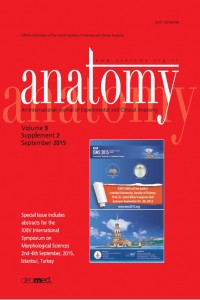Öz
Intensive research activities within the past 200 years have revealed that the central nervous system (CNS) is a heterogeneous, heteromorphic, multidimensional and multifunctional compound organ system. Scientists working in Comparative Anatomy and Embryology determined that the transformative adaptive evolution of the CNS occurred over an extensive time period of 500 million years and continues to unfold and progress. The phylogenic, ontogenic, histogenic, angiogenic, endocrinogenic and immunogenic defined compartments of the CNS present a unique macro- and microarchitecture along the spinal cord, brain stem, diencephalon and telencephalon with archipallial, paleopallial and neopallial intertwining architecture. The continuing upswing in scientific technology is providing medicine and surgery with tools of immense value; the availability of achromatic microscope, free from spherical aberration, invented by J.J. LISTER, 1830, in the United Kingdom, later the formulation of the equation ‘‘Angular Aperture’’ by Ernst ABBE, in 1880, Zeiss Company, Jena, Germany, followed by the Electron Microscope in 1933, Scanning Tunneling Microscope in 1981 and Positron Microscope in 1987.
Anahtar Kelimeler
Kaynakça
- -
Ayrıntılar
| Birincil Dil | İngilizce |
|---|---|
| Konular | Sağlık Kurumları Yönetimi |
| Bölüm | Abstracts |
| Yazarlar | |
| Yayımlanma Tarihi | 2 Eylül 2015 |
| Yayımlandığı Sayı | Yıl 2015 Cilt: 9 Sayı: S2 |
Kaynak Göster
Anatomy is the official journal of Turkish Society of Anatomy and Clinical Anatomy (TSACA).


